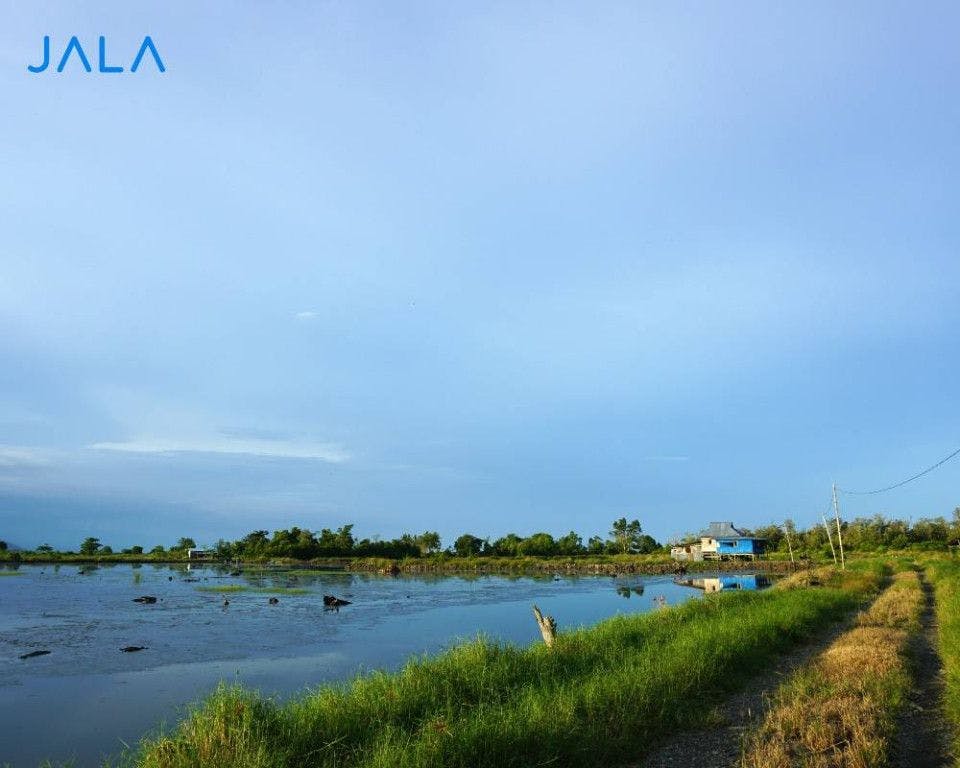
Shrimp is one of Indonesia’s prominent aquaculture commodities despite the fact that its production volume is still below that of seaweed, catfish, tilapia, and milkfish. Based on its percentage, shrimp takes up 6% of Indonesia’s total aquaculture production until 2020.
Aceh is one of the regions with the biggest potential for brackish water cultivation in Sumatra island. Unfortunately, Aceh is yet to be the highest aquaculture-producing province. The aquaculture production in Aceh last 2020 was 139 thousand tonnes. In the same year, other provinces had a higher record: 182 thousand tonnes for Lampung, 246 thousand tonnes for West Sumatra, 266 thousand tonnes for North Sumatra, and 357 thousand tonnes for South Sumatra.
Size of Aceh’s potential shrimp farming area
The total potential land in Aceh is 171 thousand hectares, but only 41.86% or 71,500 hectares have been utilized.This value is still far below other provinces such as North Sumatra, West Sumatra, and South Sumatra.
Moreover, the percentage of cultivation land utilization for brackish water is only 22.92% or 679,448 hectares from a total area of 2,964,331 hectares.
Efforts to utilize more land in Aceh have been done through a pilot program back in 2022 by the Ministry of Marine Affairs and Fisheries through the Directorate General of Aquaculture. This program is a revitalization effort for traditional farms to increase productivity.
Challenges in increasing productivity
The limited utilization of land for cultivation in Aceh is due to several existing challenges, such as:
Revitalization of traditional farms
Potential land development programs should adhere to sustainability aspects, which includes conserving the existence of mangrove forests that are abundant in Aceh coastal areas.
Opening of new sustainable farms
The ambition to increase the scope of shrimp farms needs to be balanced with opening farms that comply with existing laws and environmental impact. This should be done to minimize the negative stigma surrounding shrimp farms. Past cases have shown that there were illegal shrimp farms operating without permits.
Having a permit ensures that farmers will run their cultivation based on recommended standards, conserve the social and natural environment, and comply with existing regulations.
Support from the whole shrimp industry supply chain
One of the regencies in Aceh, Aceh Tamiang, had experienced high shrimp productivity in the 1980s, but had since decreased in productivity due to the lack of good quality fry with high production and disease resistance.
Moreover, the provision of infrastructure is also an issue. This is the responsibility of the government and shrimp industry players to maximize Aceh’s potential to be one of the centers for vannamei shrimp production. This also requires the support of cultivation product processing centers and their supply chain.
The support of experts to assist and train Aceh farmers is also important to increase productivity along with economic, social, and environmental sustainability.
The development of Aceh’s shrimp cultivation business will result in a chain reaction which includes the need for human resources (as more workforce will be needed) as well as sustainable regeneration to keep the industry running for the long term.





